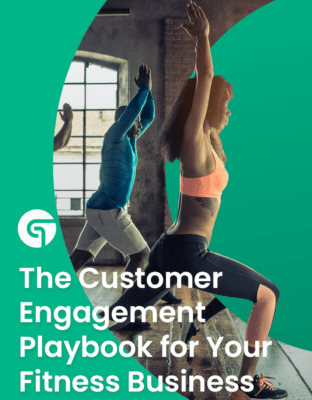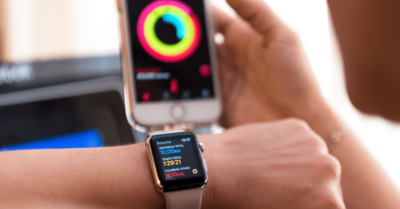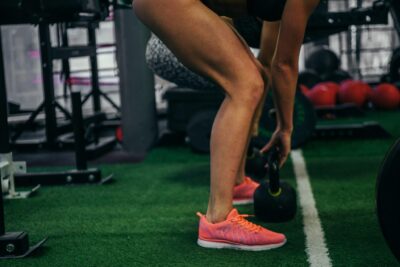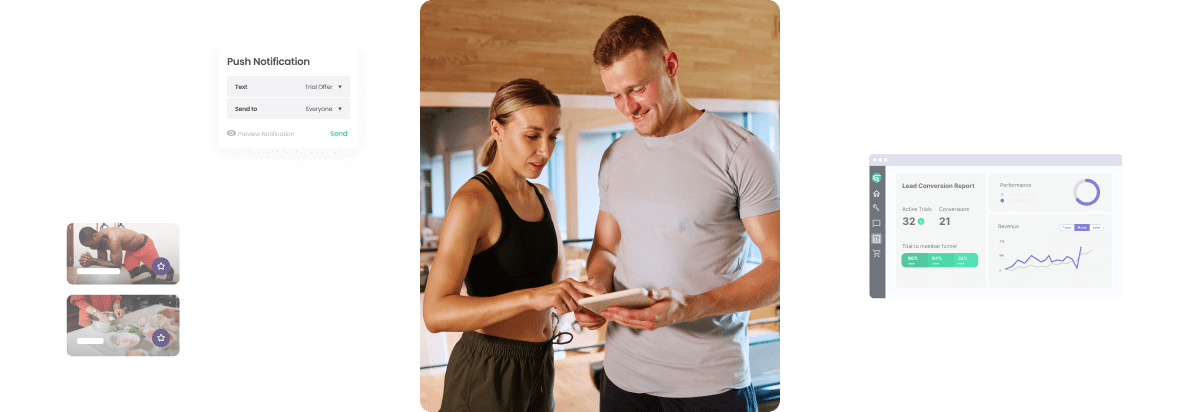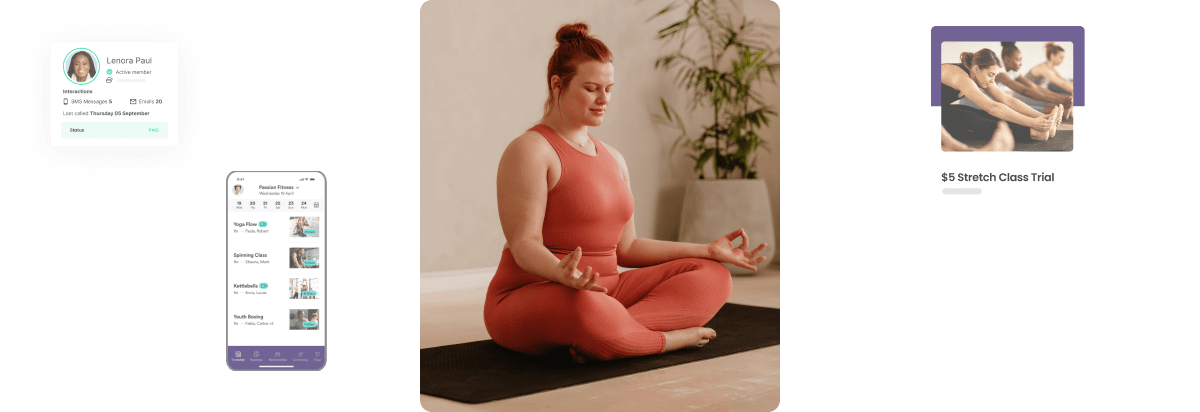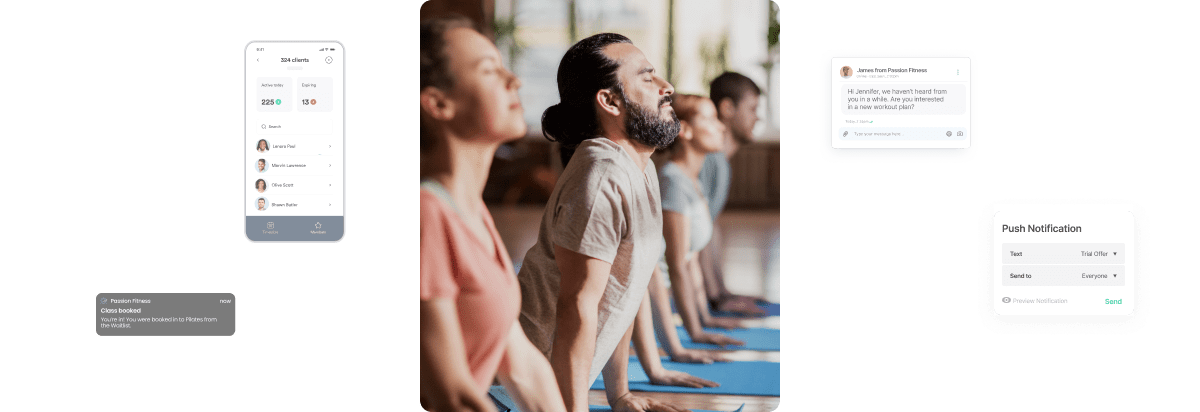“Personalization is the beginning and the only thing that will sustain your fitness journey”
These are the words of Victoria Thomas, the founder and owner of Texas based fitness studio Journey Fit. Victoria is a Glofox customer and we are currently featuring her journey with us on our website.
We thought it would be a good time to return to a podcast episode Victoria did with us back in January 2020 and explore some of her brilliant insights on personalizing the member experience to explain how you can use personalization and fitness assessments to supercharge retention in your fitness studio.
In this article, we will look at what a fitness assessment is, why it’s key to retention, how to create a winning fitness assessment and how personalization powers the member journey post fitness assessment.
Skip ahead to:
- What is a fitness assessment?
- Why is a fitness assessment key to retention?
- How to create a winning fitness assessment for your fitness business
- Post fitness assessment - how to win with personalization
What is a fitness assessment?
A fitness assessment evaluates your overall health and fitness through a series of fitness tests. It’s typically conducted by a fitness professional. The test helps gain an insight into a person’s level of fitness, endurance, body composition and general health.
In a fitness studio, a fitness test should be carried out before they start their fitness program. It should then be conducted again at different points in their membership to assess their progress.
Why is a fitness assessment key to retention?
While acquisition is super important, successful retention is what’s really going to grow your business. Think of it this way – you’re filling a bucket with water. But there’s holes in it leaking water, meaning you’re never going to retain enough water despite how much you put in.
It’s the same with acquisition and retention in a fitness business. If new members sign up each month but they aren’t staying long term, you’re always spending more money on marketing to sign up members to plug the gaps in your monthly revenue targets – eventually it becomes exhausting and unsustainable.
Acquiring a new member is anywhere between 5 to 25 times more expensive than retaining a current member. The best way to retain them is to deliver them real value and real results from their membership package.
The starting point is a fitness assessment.
A fitness assessment or fitness test will give you key insights into a new members fitness level. This will allow you to build a personalized plan that will deliver them the real results they want.
That is the value that will keep retention rates high.
How to create a winning fitness assessment for your fitness business
There are a couple of important areas to cover when creating a winning fitness assessment – let’s take a closer look what steps you need to take.
What should you do before conducting a fitness assessment?
There are a few things to consider when you first sit down to plan out your members fitness assessments. You need to factor in their age, injury history, and what their ultimate goals are. All of these need to be carefully considered so you have the best results possible for the member.
Assessments need to be highly individualized so members have the best springboard possible to get the results they want. Let’s take a closer look at the factors to consider.
The person’s age: Factoring in a person’s age gives you an idea of the level and intensity the member should perform. In the last few years the World Health Organisation has updated its recommendations on what kind of exercise different ages brackets should be doing.
According to a report in verywellfit.com, theses are the new recommendations for adult exercise:
- Adults aged 18 to 64: Those without medical issues should do at least 150 to 300 minutes of moderate-intensity aerobic physical activity per week or 75 to 150 minutes of vigorous-intensity activity. They should also do muscle-strengthening activities that involve all major muscle groups on two or more days per week.
- Adults over 65: The WHO suggests adding functional balance and strength training at moderate or greater intensity on at least three days per week to prevent falls and improve overall function.
Injury history: Unfortunately, it’s a fact of life that people will likely pick up injuries in their lifetime. Exercise will always be at a certain intensity. There’s always a risk someone could aggravate an old injury or pick up a new one.
There’s a lot of value in putting together a questionnaire at the very beginning of the process. This helps figure out exactly the injury history of the person. You can then tailor their program to ensure they get the right results – without exposing them to injury.
Their goals: A person joins a gym for one main outcome – results. Again using a questionnaire is a great way of gathering information on what their goals are.
When you know what the person wants to achieve, be it weight loss, muscle gain or conditioning for a sport, you can then create a suitable and accurate baseline for them to begin their journey.
What should be included in a fitness assessment?
General health evaluation: Discover the general health of the member, including height, weight, physical fitness, resting heart rate, current activity levels and any relevant medical and injury history.
Body composition test: A body composition test looks at the member’s total body weight, including muscle, bones and body fat percentage. A Body Mass Index (BMI) test is commonly used in the fitness industry, despite some concerns its becoming outdated. It calculates your body fat based on your height and weight.
Cardiovascular endurance test: This test measures how effectively the lungs and heart supply oxygen and energy to the body during exercise. There are a couple of different ways to test cardiovascular fitness. This includes a 12 minute run test, a blood pressure analysis, heart rate monitoring, an exercise stress test and a VO2 max test, which uses a breathing mask to measure breathing during exercise.
Strength and endurance test: To know exactly where a member needs the most attention strength wise, a test to see how much force a muscle can exert is important. Strength and endurance tests can involve a combination of push ups and core exercises to gauge muscle strength and muscular endurance. The results are measured against people of the same sex and age to determine a baseline for the member
Flexibility test: A flexibility test will help you figure out if the member has any issues with range of motion, foot instability or postural imbalance. Some of the tests commonly used include sit and reach testing, shoulder flexibility testing and trunk lift testing.
According to Victoria Thomas, fitness assessments form a crucial part of the member experience in JourneyFit. She makes the important point that if “you don’t know what applies to you personally, you could just be doing trial and error for the rest of your life”.
But fitness assessment is only the starting point. After that you need to develop a highly personalized journey with the member that keeps them accountable and on the path to hitting their fitness goals.
Post fitness assessment – how to win with personalization
Two Brain Business founder Chris Cooper regularly talks about what you should offer a member with your membership package. His philosophy is that the gym or the workout program isn’t the product – your relationship with the member is the product.
The Customer
Engagement Playbook
for Your Fitness
Business
Discover more What he means by this is that your workout alone won’t retain members. It’s about building a relationship with them and being invested in their journey and hopefully eventual success.
Beyond the fitness assessment, create a journey for the member to go on with various touch points along the way. In a group fitness business this can be a challenge. You don’t have the one on one workout sessions a personal trainer would through in personal training sessions.
In her Fitness Founders Podcast interview Victoria Thomas lays out a couple key personalization strategies to implement in a group fitness business post fitness assessment.
Ask members what matters to them
Member feedback helps you craft an experience super focused on the individual’s needs. At JourneyFit, they did this by conducting an in-depth member survey to find out the issues that each person was experiencing.
According to Victoria, some people had a lot of visceral fat in their mid-section, some were suffering from gut problems, and some were experiencing problems with old injuries. By discovering this information early on, JourneyFit could work around these concerns and keep members on track.
Have members fill out a new-joiner survey so you can get to know them a little better. It’s also good practice to ask at the end if they think any important questions are missing for future reference!
Another key point is to give them the chance to easily provide feedback or ask for advice whenever you can. If you’re actively asking your customers how you can improve, you’re telling them that what they think matters to you.
You killed it today. Tell us how you’d rate your workout.
How would you rate the class
* * * * *
How would you rate your instructor?
* * * * *
How do you feel after your workout?
___________________
We want to give you the best. Can we make any changes?
___________________
Thanks for your feedback. See you soon!
Track progress
If your members are following a program, then it’s also crucial for them to see progress. Maybe it’s the weight they’ve lost or the muscle they’ve gained or even something simple like increasing the amount they lift every week.
Without seeing progression, it’s easy for someone to lose sight of why they joined in the first place. It slowly becomes a “what’s the point?” mindset. Choosing a way to help someone track their progress is crucial. Luckily there has never been more tools available for tracking progress.
In JourneyFit Victoria uses a 3D body composition tool to gain deep insights into the person and presents them with a detailed six page report.
This type of detail gives the person real insight into where their body is currently at. And with the regular 30 day reassessment Victoria conducts, the member not only sees how they are changing on the outside from the program, but on the inside too.
Make members accountable
When it comes to a member’s personal goals, you can only do so much. Whatever the goal may be, you work with them to manage their expectations, set a plan and deadline, and track their progress. But the member is accountable for showing up to a workout. You can’t go knocking on their door and drag them in. If you’ve set them a nutrition plan, it’s then up to them to follow it.
As we already know, each member has different interests and preferences. It’s your member data that can reveal how they’re different. You can see things like what time of day suits them, and what kind of workouts they like best.
You can use this information to hold members accountable, make them feel valued, and personalize their experience:
- Analyze data like class attendance, goals, and fitness interests.
- Target members with helpful, personalized content that will motivate them.
- A simple ‘upcoming class’ email or text is a subtle reminder that they’re accountable for showing up.
Our partners over at ABC Trainerize also have an excellent guide on this topic, allowing you to keep your gym or studio full even in the most traditionally quiet periods.
Read More: The Trainerize Guide to Member Retention
In summary
As we all know a high retention rate is key to growing your fitness business sustainably and successfully. 50% of people quit within the first 6 months of joining a gym or fitness studio. The common cause of this is a lack of regular, personalized interaction with members.
As retention expert Dr. Paul Bedford notes regularly, mapping out a specific journey for a member, will help retain them longer. The starting point on this journey should always be a fitness assessment. Done correctly, a fitness assessment will give you a highly detailed insight into how you can help a member achieve their goals in their exercise program.
After that, as Victoria Thomas has put into practice successfully in JourneyFit, you need to make sure personalisation is front and center of your member experience.
The Customer
Engagement Playbook
for Your Fitness
Business
connects with its customers on a deeper level than a
simple business and consumer relationship.
